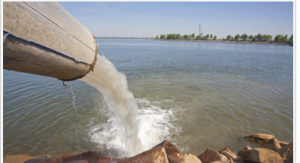 WASHINGTON — Federal drinking water rules are so relaxed that not even the city of Flint, Michigan, has been cited for a violation, even though many Flint residents have been relying on bottled water for drinking and cooking since last year.
WASHINGTON — Federal drinking water rules are so relaxed that not even the city of Flint, Michigan, has been cited for a violation, even though many Flint residents have been relying on bottled water for drinking and cooking since last year.
The Natural Resources Defense Council said Tuesday that 18 million Americans got water from systems that violated federal standards last year, according to federal data.
And the environmental advocacy group said an untold number of water systems break the rules without landing in the Environmental Protection Agency’s database of water regulation goofs — including Flint.
“Flint’s absence in the federal data system raises the question: If Flint’s extraordinary lead contamination problems are not included in the EPA’s official compliance data,” the NRDC’s report says, “how many other municipalities’ serious lead problems are being swept under the rug by officials responsible for protecting public health?”
An EPA spokeswoman noted it’s up to states to notify the agency of drinking water violations by municipal water systems.
“EPA recognizes there are ongoing challenges in compliance with the Lead and Copper Rule and is working closely with states, who under the Safe Drinking Water Act are the first line of oversight of drinking water systems and take the majority of enforcement actions,” the spokeswoman said in an email. The Lead and Copper Rule is the main federal regulation for limiting lead levels in public drinking water. Read More



 New York State residents have long enjoyed high quality, affordable potable water; the result of the State’s protected source waters and reservoirs, and robust testing and filtration programs. In fact, most New Yorkers have taken the quality of their potable water for granted. But in recent weeks two upstate New York towns – Hoosick Falls and Petersburg – have detected elevated levels of perfluorooctanoic acid (PFOA) in their drinking water supplies, leading state and federal authorities to warn residents against using tap water for human consumption.
New York State residents have long enjoyed high quality, affordable potable water; the result of the State’s protected source waters and reservoirs, and robust testing and filtration programs. In fact, most New Yorkers have taken the quality of their potable water for granted. But in recent weeks two upstate New York towns – Hoosick Falls and Petersburg – have detected elevated levels of perfluorooctanoic acid (PFOA) in their drinking water supplies, leading state and federal authorities to warn residents against using tap water for human consumption. In
In  Yesterday evening, the Department of Health and Human Services designated Dr. Nicole Lurie, an agency assistant secretary, to lead the federal government’s response to the elevated lead levels allegedly found in the drinking water being provided by the City of Flint, Michigan, to its residents. This designation came on the heels of a meeting between Flint’s mayor and Valerie Jarrett in Washington, D.C. The federal government has elected to play a significant role in addressing this crisis, with President Obama signing an emergency declaration on Saturday which provided Flint with access to up to $5 million in federal funds. The crisis began in 2014 when Flint stopped getting water from Detroit and began obtaining its drinking water from the Flint River in an effort to lower costs.
Yesterday evening, the Department of Health and Human Services designated Dr. Nicole Lurie, an agency assistant secretary, to lead the federal government’s response to the elevated lead levels allegedly found in the drinking water being provided by the City of Flint, Michigan, to its residents. This designation came on the heels of a meeting between Flint’s mayor and Valerie Jarrett in Washington, D.C. The federal government has elected to play a significant role in addressing this crisis, with President Obama signing an emergency declaration on Saturday which provided Flint with access to up to $5 million in federal funds. The crisis began in 2014 when Flint stopped getting water from Detroit and began obtaining its drinking water from the Flint River in an effort to lower costs.
